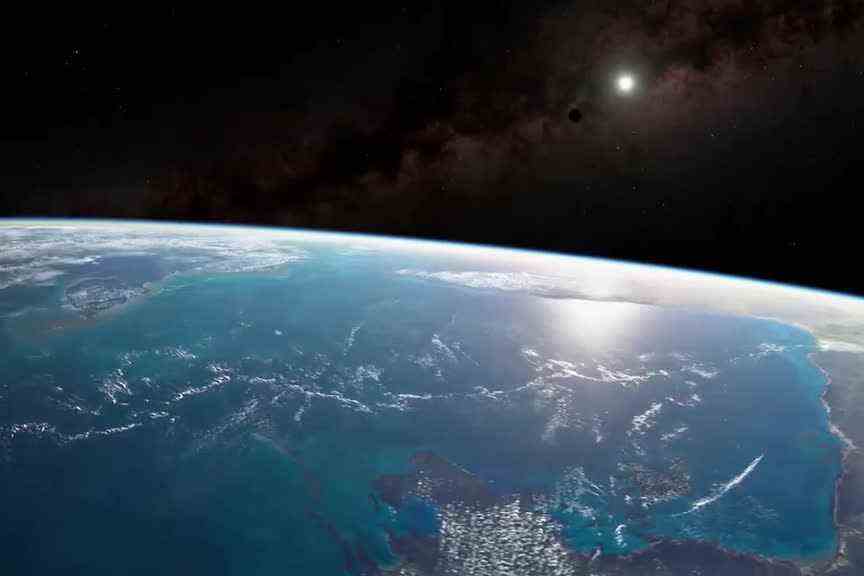Ice is an element of great beauty. It can take on various shapes and colors, it can inspire artists, it is at the heart of Inuit culture. But it is also essential to life on the planet. This is illustrated ice worlds, a film at the crossroads of art and science which opens at the Planétarium Rio Tinto Alcan on Wednesday.
Director Philippe Baylaucq chose ice as a subject “a bit by chance” in 2018, simply knowing that it was an issue in the whole issue of climate change.
A full year of research and discussions with scientists have shown him to be “one of the strangest and most amazing materials on the planet”.
“Ice exists elsewhere in the solar system and the cosmos, but in general it is in a hyper frozen form, hard as gravel, he explains to The Press alongside the presentation of ice worlds. On planet Earth it oscillates between being and not being, it is always on the verge of melting. »

PHOTO PROVIDED BY THE NFB
Ice climbers in the movie ice worlds
According to him, ice thus becomes a metaphor for life and humanity: “fragile, multifaceted and beautiful”.
The film, produced by the National Film Board in collaboration with the Planetarium, explores the origin of ice and its role in sustaining life. This is how ice reflects something like 60% of the sun’s radiation, and even up to 90% when covered in snow.
“Who says radiation says heat, recalls Mr. Baylaucq. When the ice melts, the portion of the ocean that absorbs heat increases, the ocean gets warmer, the ice melts more. We are in a vicious circle that we can no longer control. »
A tough shoot
The filming of ice worlds was particularly complex.
“After a year of research, I started planning film shoots in the Far North and the Yukon,” says Philippe Baylaucq. Two weeks later, COVID-19 arrived. The project completely changed course, I had to find a plan B.”
He trained people remotely in the Yukon and in the Far North, he sent them 360 degree cameras.
He and his team set up an “ice lab” in a warehouse of the Arctic Glacier ice maker in Pointe-Saint-Charles in the summer when it was 30 degrees outside.
“We were cold for 13 days of filming, with kodaks that didn’t always want to follow. It wasn’t like going to the Far North, but almost. »

PHOTO ALAIN ROBERGE, THE PRESS
The narrator of ice worldsBeatrice Deer, and director Philippe Baylaucq
Filming in winter was also complicated, with an abnormally hot season.
“I brought ice cream from Charlevoix, I kept it in my yard, recalls the director. We had three days at 5 degrees, I was losing my ice cream. I had to go to my grocer to ask if he could keep my ice cream. It was chasing after the cold. The metaphor is there: if you lose the ice cream, you are lost. »
The pandemic has not helped. The production managed to get hold of two figure skaters who could skate together, Nikolaj Soerensen and Laurence Fournier-Beaudry, because they were a couple in life and could thus conform to the rules of the time. In ice worldsthey can be seen evolving behind an ice partition.
Incidentally, a shooting review (making-of) shows the great creativity that characterized the filming.
ice worlds places great emphasis on the scientific aspects of ice while emphasizing its beauty: the images are often magnificent.
Inuit culture also has its place: Inuit artist Beatrice Deer was chosen to narrate ice worlds. “I’ve always been fascinated by the beauty of ice and snowflakes,” she says on the sidelines of the presentation. But learning about the scientific processes behind ice makes it even more magical for me. »
She was particularly struck by the importance of ice for sustaining life. “There would be no life if there was too much ice, or if there was too little,” she says. It’s a delicate balance. We are at a crucial turning point. That’s what I learned. »
